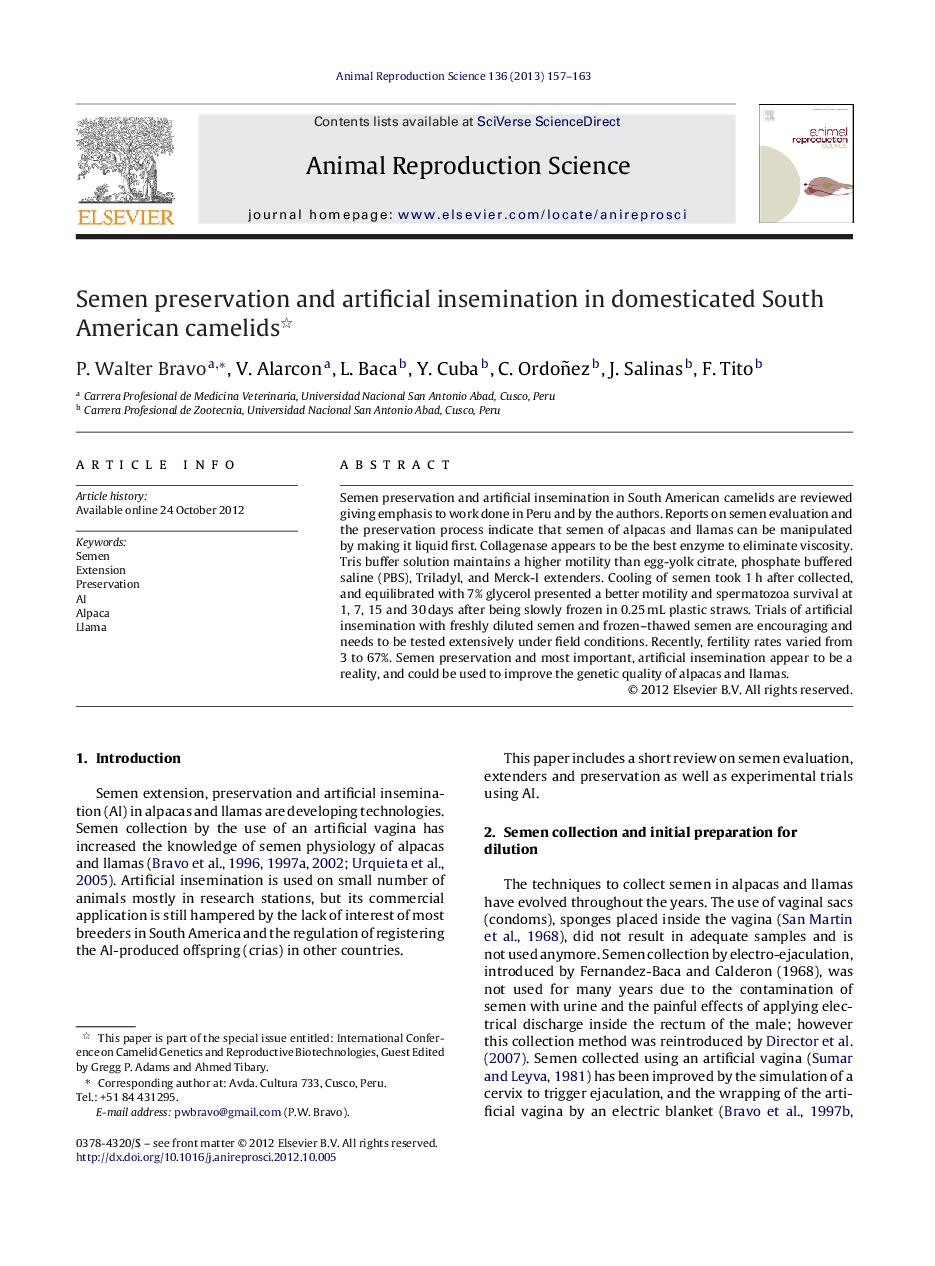| Article ID | Journal | Published Year | Pages | File Type |
|---|---|---|---|---|
| 2073161 | Animal Reproduction Science | 2013 | 7 Pages |
Semen preservation and artificial insemination in South American camelids are reviewed giving emphasis to work done in Peru and by the authors. Reports on semen evaluation and the preservation process indicate that semen of alpacas and llamas can be manipulated by making it liquid first. Collagenase appears to be the best enzyme to eliminate viscosity. Tris buffer solution maintains a higher motility than egg-yolk citrate, phosphate buffered saline (PBS), Triladyl, and Merck-I extenders. Cooling of semen took 1 h after collected, and equilibrated with 7% glycerol presented a better motility and spermatozoa survival at 1, 7, 15 and 30 days after being slowly frozen in 0.25 mL plastic straws. Trials of artificial insemination with freshly diluted semen and frozen–thawed semen are encouraging and needs to be tested extensively under field conditions. Recently, fertility rates varied from 3 to 67%. Semen preservation and most important, artificial insemination appear to be a reality, and could be used to improve the genetic quality of alpacas and llamas.
